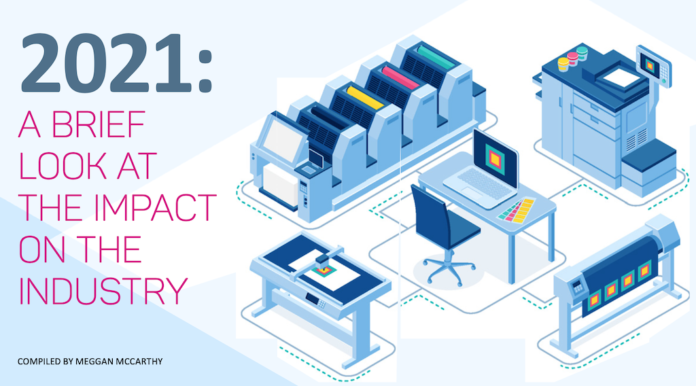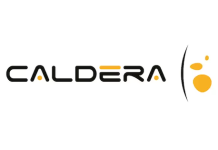The Covid-19 pandemic, riots, load shedding and poor economy have greatly impacted the signage and printing industry. Company representatives give their take on the year that was, as well as some encouragement for the year ahead.
Dave Reynolds, Managing Director, Agfa South Africa
1. How do you think 2021 has fared for the printing industry?
We have seen a recovery in 2021 versus 2020, but not to the level of 2019. The Covid-19 pandemic and the volatile socio-political environment that we find ourselves in has caused a technology shift towards digital communications, which has adversely affected printed media.
That being said, there are some printing companies that are very busy, and as we start the ramp up towards the year end promotions, we hope to see the recovery being stronger than expected. In spite of these macro economic pressures, printers are still investing in hardware and software, which is a positive signal for the future of print. Optimisation and efficient use of resources will ensure sustainability going forward.
2. Are supply levels still a challenge?
The supply side of the business has become very difficult to manage. Shipping costs, shortages of containers and ships missing ports due to congestion are all adding to increased order to delivery times. The input costs are rising, with aluminium at a 30 year high, and sea freight costs up 300%. Litho printing plates are becoming increasingly expensive.
The lead time for equipment has doubled due to the world-wide semi-conductor shortage, and this has impacted OEM manufacturers of computer to plate and other equipment. We are not sure when this situation will ease — most indicators are that these issues will continue to be with us well into 2022.
Raymond Waldeck, CEO, Kalideck
1. How has 2021 fared for the printing industry?
This year has brought a lot of discomfort, both from a micro and macro perspective. The signage and printing industry, in particular, has been confronted by a (perfect) storm fuelled by ever increasing variables and entrants joining in the chaos and uncertainty. Whilst we mourn the loss of customers, colleagues and friends during the past months, we need to be resolute in striving to outwit and overcome the pre-lockdown economic shrinkage, lockdown, riots and massively constrained logistic limitations that brought discord and accelerated flux to the market and our industry.
Changes in the routes to market, business protocols and changing demand patterns for print and signage saw providers scampering to satisfy the much needed requirements for product and services. Those with strong supplier alliances benefitted, while some with less robust relationships came to appreciate the value of continuous partnerships with reputable companies that can weather the storms in the supply chain.
The adage of ‘The customer is king, but without a supplier there simply is no business’ was amplified by the fact that reputable, responsible and sustainable supply chain partnerships are critical to the future success of any organisation, and even more so in the print and signage industry.
2. Even in a crisis, there are always business opportunities. Any positivity you can share?
Many in our industry took advantage to re-invent themselves. With true grit, old alliances have been strengthened and new ones formed. The importance of the supply chain was highlighted, and continuity of supply, quality and sustainability moved ahead of the price game. Printers took advantage of the strength and resilience that a few of the merchants have. They used the depth and diversification of supply, which allowed them to expand their traditional offerings with adjacent and complementary products and services, which in turn allowed them to explore new and exciting income streams.
The lines between the print, signage and packaging industries are blurring ever further and are becoming more integrated as time goes by. Suppliers that can satisfy the diversification required and provide consistent provision of stock and material across the differentiated requirements are key to future prosperity for all the players in our industry.
3. Are supply levels still a challenge?
Economies of scale, demonstrated by the carrying of substantial stock and provision of product and services, are paramount to the future service of our industry and all its participants. The logistic storm that has befallen us is only in its infancy and will not only impact on supply for the next 18 to 24 months, but will change the way in which we do business in the future. Prices are on a massive inflationary path and woe be it to those that build their business on ‘cheap’ products or services.
Competitive advantage will come from alliances and partnering with reputable suppliers and these relations will need to be enhanced with accurate forecasting and resource planning on the back of adequate inventory and product investment in Southern Africa. Merchants will have to step up and strengthen their supply and diversification of products in order to provide a sustainable buffer of both product and credit to the industry at large.
4. What advice do you have for those in the industry?
Growth, and indeed rebirth, always involves risk and pain. Risk of course always involves fear, but on the other side of fear lies freedom. Be brave and take risks — growth will be your reward.
Rob Makinson, Midcomp Group CEO
1. How do you think 2021 has fared for the printing industry?
On the whole, the majority of our customers are back to pre-Covid production levels. The exception of course was July, as a result of the unrest. Durban customers were hit particularly hard during that period. We have seen a few casualties along the way — a few of the smaller companies who just did not manage to survive the collateral damage of hard lockdowns.
2. Are supply levels still a challenge?
Yes, probably the biggest challenge for us in 2021. As a result, we increased our inventory levels and have managed to avert most of the problems. Supplies out of China have been hardest hit but fortunately that is a very small part of our business. There is no immediate end in sight until air travel is restored to close to pre-Covid levels. There simply is not enough aircraft to meet the demand.
3. What advice do you have for those in the industry?
With such a prominent focus on global warming, we believe that the environmental impact of printing will be under the spotlight very soon. It would be wise to start looking at the carbon footprint of your printing facility. Prominent large retailers already audit Print Service Providers to check the environmental impact of the prints themselves as well as disposal techniques for waste. So solvent and UV ink consumers and companies focusing on PVC instead of textile and polyethylene will see a shrinking market for their prints. And then, as I always say, think outside the box. If you can knit a jersey, you can knit a scarf — so stick to your core business values, but also try different but related things.
Grant Potgieter, General Manager, Graphics Systems Division, FUJIFILM Graphic Systems South Africa
1. How has 2021 fared for the printing industry?
Many customers were really hamstrung by the arrival of Covid as well as the insurrection we experienced in June, having to reshuffle their businesses to adjust to the decline in print. Having travelled a lot after lockdown, the sense in the print industry is that the economy was already in a slight free fall prior to Covid. However, these incidents obviously accelerated that.
The closure of key businesses and industries such as restaurants and hospitality has had a massive bearing on our customers’ ability to operate at capacity. The printing that would normally be associated with these industries in terms of flyers, menus, banners and more came to a grinding halt. There has been a massive impact down the line, such as the loss of revenue and the natural constraints of cash flows. Access to capital and finance has also been difficult for most.
2. Even in a crisis, there are always business opportunities. Any positivity you can share?
I am amazed at how well our customers have come through this pandemic. Businesses that have invested in new technology, systems and software prior to the pandemic are the ones that seem to have flourished most. The resilience and ‘never say die’ attitude of our customers has stood out as the biggest positive for me.
3. What advice do you have for those in the industry?
Businesses need to continually manage costs and look at ways to diversify and carve new niches in their business. Owners should also continue to invest in their businesses, regardless of how tough the situation is currently. Companies must make an effort to understand their customers’ needs, align with their strategies and continually find ways to add value.















